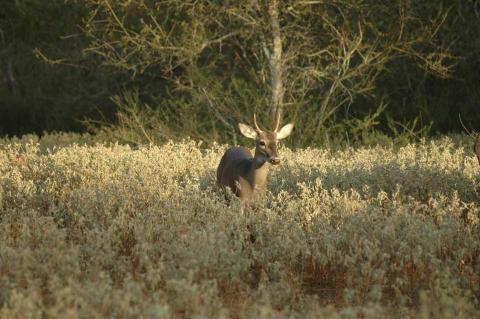Brodie Swisher

Despite all the negative hype wild hogs receive, they continue to provide one of the most exciting hunting opportunities you’ll find all year long. Hogs are in abundant supply across many southern states, and you’ll typically find open seasons and unlimited bag limits. They are the perfect critter to help keep your hunting skills sharp and equipment dialed in. But there are some things you need to know when it comes to the cleaning and care of a wild hog after the shot.
Here’s a look at what you need to know about cleaning wild hogs.
Keep it Safe

Hogs are known to be carriers of brucellosis, a highly contagious disease which can be transmitted to humans from animals. It can occur by ingestion of undercooked meat from infected animals or close contact with their secretions. Humans can contract swine brucellosis if blood, fluid or tissue from an infected animal comes into contact with the eyes, nose, mouth or a skin cut. Brucellosis does not affect the edibility of the meat, but it should be thoroughly cooked (160 degrees).
The Centers for Disease Control and Prevention recommends the following precautions when field dressing hogs:
- Use clean, sharp knives for field dressing and butchering.
- Wear eye protection and rubber or latex gloves when handling carcasses.
- Avoid direct contact of bare skin with fluid or organs from the animal.
- After butchering, burn or bury disposable gloves and parts of the carcass that will not be eaten.
- Avoid feeding raw meat or other parts of the carcass to dogs.
- Wash hands as soon as possible with soap and warm water for 20 seconds or more. Dry hands with a clean cloth.
- Clean all tools and reusable gloves with a disinfectant, such as diluted bleach.
- Thoroughly cook the meat (internal temp 160 degrees). Be aware that freezing, smoking, drying and pickling do not kill the bacteria that cause brucellosis.
Avid hog hunter from Georgia, Efton Green, recommends taking the disease very seriously. Green kills his fair share of hogs each year and says brucellosis is no joke.
“A good friend of mine dealt with brucellosis first hand a few years back,” said Green. “He told me that at one point he thought he was going to die from the disease. It got that bad. Hog hunters definitely need to keep it in mind when they are handling hogs after the kill.”
Some meat processors may not accept hogs for processing in their plant due to concerns of brucellosis transmission. Be sure to check local processors in the area prior to your hunt so you’re not left high and dry with a dead hog and no processor to handle it.
Field Dressing a Hog
Field dressing the hog allows it to cool quickly and helps prevent damage to meat. The process is much like what you might have experienced in gutting a deer.
- Lay the hog on its back, use knife to cut from center of back legs and cut the thin layer of belly skin all the way to the throat.
- Open the carcass of the hog being careful not to puncture the internal organs. This can be done with a gut hook or holding the skin of the stomach up with your two fingers and carefully slicing down toward the neck.
- Break open pelvic bones to clean out any feces while being careful not to puncture the urine bag.
- Roll the hog on its side, and cut and pull guts away from the cavity.
- Remember to wear rubber gloves throughout the process of handling hogs to prevent contact with blood and reduce the transmission of Brucellosis.
If you have quick access to a skinning rack, the gutting and skinning process can be knocked out quick and easy all in one process. Hang the hog with its head down and begin the steps mentioned above.
The key is to get the animal cooled down as quickly as possible once removing the guts. A walk-in cooler makes the cool-down quick and easy if you have access to such, however, most often a portable ice chest is the next best thing.
The hog will need to be skinned and quartered out in order to be placed into ice chest for transport.

Remember, a good knife is a must when skinning hogs. They are much tougher than a deer. Keep your knife sharpener handy, or have replacement blades on hand.
Conclusion
Don’t let the processing chores deter you from enjoying one of the most exciting hunting experiences of the season. Hogs provide an abundant supply of quality meat. And you’ll likely find a hog hunt to be the most affordable hunting trip you’ll take all year. Just keep it safe, remember the items mentioned above, and have fun loading the freezer with wild hog this season.































